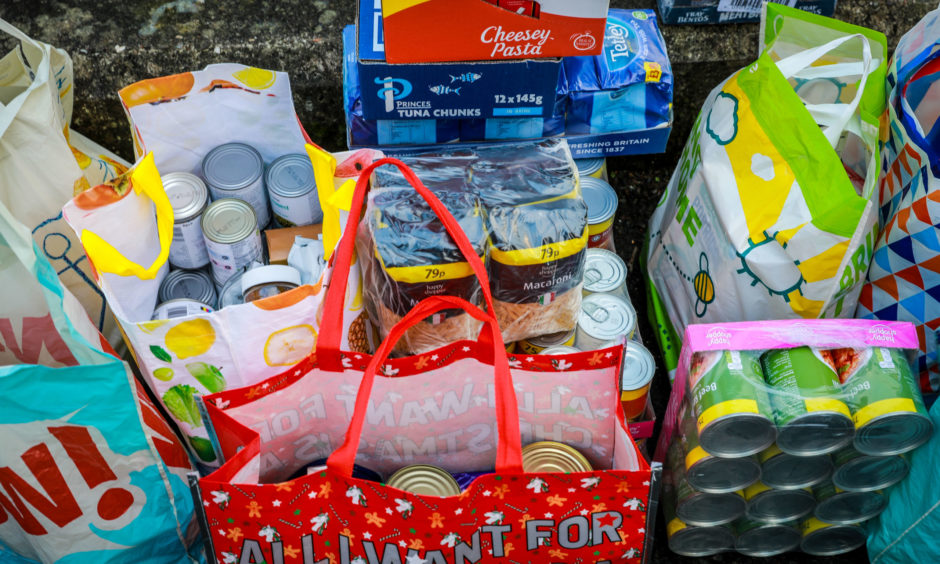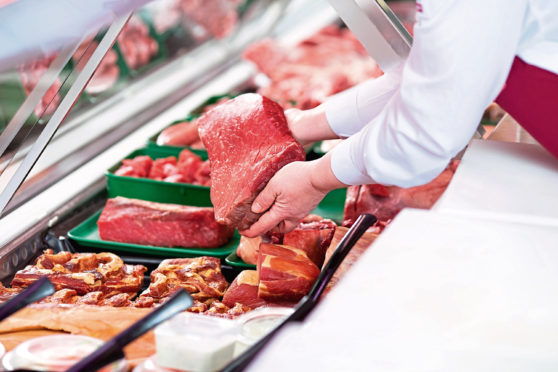Recent outbreaks of Covid-19 linked to food factories have raised new concerns over the prospect of contamination. Here we look at the latest advice.
A coronavirus outbreak linked to the 2 Sisters chicken factory in Coupar Angus has prompted concern over the spread of the virus in factories handling food, with separate outbreaks reported elsewhere in the UK.
Ninety-six factory workers and 14 community contacts have now tested positive for the virus in Perthshire – a jump of 20 confirmed cases in 24 hours.
Now a World Health Organization special envoy has warned that cramped conditions in some factories and in the homes of low-paid workers may be driving infection rates in the sector.
But is there a risk from these outbreaks to consumers? Food Standards Scotland, the public body that oversees safety and protection around food and drink, says there is currently no evidence that food is a source of coronavirus and it is “very unlikely” that Covid-19 can be transmitted through food.
While we can take comfort in that, scientists have started to raise concerns over the threat of food contamination – though that threat is still considered to be low. In a study in Singapore in which individual pieces of fish and meat were deliberately contaminated with Sars-CoV-2 (the virus which causes Covid-19), and refrigerated or frozen at temperatures similar to those used for transportation, scientists found the virus was still present on the samples after 21 days.
The study flags the importance of ensuring health and safety protocols are followed at all times within food plants to keep risks to a minimum.
Food Standards Scotland has also published advice for consumers and, here, we share their answers to some of those key questions around food safety during the pandemic:
Can I catch coronavirus (COVID-19) from food?
Coronavirus is not a food-borne gastrointestinal virus like norovirus (also known as the winter vomiting bug) which causes illness through eating contaminated food.
Covid-19 is a respiratory illness and the transmission route is thought to happen mainly through direct contact with respiratory droplets generated when an infected person coughs or sneezes.
The main transmission route of the virus is assumed to be direct human-to-human contact.
Based on what we know about similar viruses, the virus would be inactivated through thorough cooking and the disinfection of food preparation surfaces using appropriate methods.
Thorough and frequent handwashing will further reduce any risk of spreading Covid-19 indirectly through contact with potentially contaminated surfaces.
Whilst food is not considered to be a source or transmission route for Covid-19 it’s always important to follow the four key steps of food safety – cooking, cleaning, chilling and preventing cross contamination – to reduce the risks of all food-borne illness.

Can I catch coronavirus from food packaging?
Indirect contact with Covid-19 through touching a surface or object that has the virus on it is not thought to be the main way the virus spreads.
However, thorough (with soap for 20 seconds) and frequent hand washing will help to minimise the potential for indirectly spreading the virus from any surfaces that may have become exposed, including packaged and unpackaged foods.
Hygienic handling of food is important to prevent the transmission of any bacterial or viral infection – not just Covid-19.
You are advised to wash your hands thoroughly after handling food deliveries or unpacking your food and drink at home on returning from the supermarket. Try not to touch your face while you are unpacking the products and disposing of any outer packaging.
Follow good food hygiene and wash fruit and vegetables by rubbing under water and peeling the outer layers or skins, if appropriate.
Is it safe to eat imported foods from higher-risk countries?
Based on the current evidence, the risk of imported food and packaging from affected countries being contaminated on arrival into the UK is considered to be very low. This is because the legislation requires appropriate controls to be in place to ensure good hygienic practices are followed by the exporter during the packing and shipping process.
Is it okay to buy food from people selling door to door?
Food Standards Scotland’s advice is never to deal with cold callers selling food at the door, especially those offering to supply fish, poultry and meat. We would advise consumers to only purchase food from established supermarkets and local food stores and suppliers which are open for business.
:: For more advice on preventing infection visit nhsinform.scot
:: There is further information on food safety at foodstandards.gov.scot










